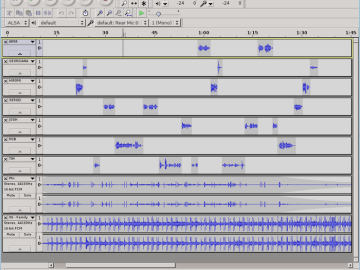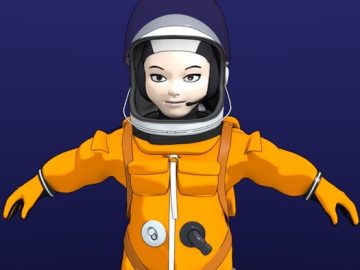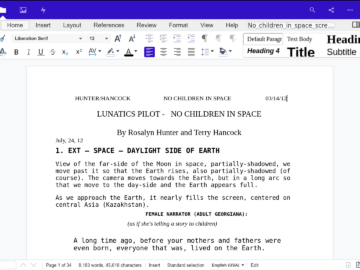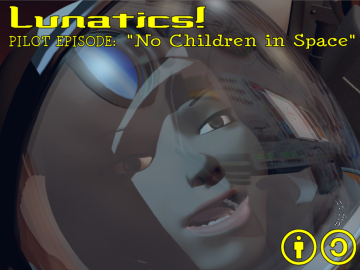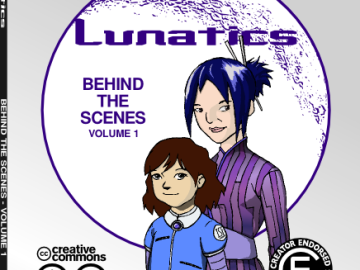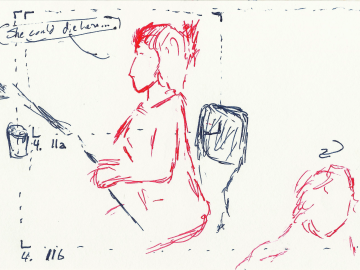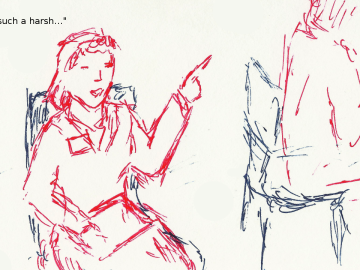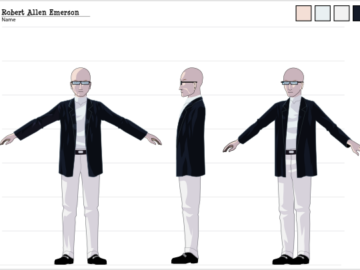Category: production
Our show doesn’t really have a single star. Instead we have an ensemble of several colonists, each of whom gets their own stories. But we also want to get them together as for ensemble moments, like this scene of the two main families having their first meal together on the Moon.
There are several factors we have to balance in coming up with a style of animation and rendering for “Lunatics!” You might think that 3D animators should always try for maximum realism (“photorealism”) when making animation, but this is not necessarily a good idea. First of all, the human eye is extremely good at spotting errors in photorealistic renderings and especially in animation. This is the basis of the problem known as the “uncanny valley effect”: if you have extremely photo-accurate models and renderings of characters, then even the slightest error in movement creates a disturbing “creepy” effect. Such animations are often described as “zombie-like” or “doll-like”. This is because we are very sensitive to tiny differences in the way real people move.
The path we took towards the concept for the pilot episode was pretty convoluted. It arose out of a number of constraints we were trying to deal with when we were planning to launch the “Lunatics!” series. Both “No Children in Space” and “Earth” are drawn roughly from Rosalyn’s original short story, “The Arrival”.
I’m doing some production math today: created a list of every single shot in the pilot episode – there are 393 of them, omitting a few repetitions. For each, I listed all of the 3D model assets used. Then I wrote a little Python script to pivot this table and create a list of all 3D assets with the shots they appear in. There are 254 3D assets listed, ranging from the character “Georgiana” (118 shots) to the prop “Vegetables-Various” (1 shot).
Rosalyn Hunter recently wrote an initial draft of the novella version of “No Children in Space” as part of NaNoWriMo. We’re planning to offer print and e-book copies as part o our upcoming crowd-funding campaign. Here’s a couple of brief excerpts from the story.
Well, this is taking a little longer than I planned, due to software problems I don’t even want to get started on (I’m having to do a lot of workarounds and trouble-shooting as a result). But I’m getting fairly close now. Just have to smash some more menu bugs. Much of the DVD-authoring also serves double for the USB flash drive versions, since it will be basically the same design (for these, I’ll be using the prototype Lib-Ray spec, which basically means a small on-disk website with linked videos). These will be “hybrid” DVDs with additional “DVD-ROM” content accessible by computer. I may have to be a little creative with that, since the whole production source tree is now too big to fit comfortably on a DVD. I’ll be paring it down some, and some content will probably be on a second disk. Meanwhile, of course, the video of the animatic is available on our website: http://lunatics.tv/Episodes/Pilot/Animatic
Just in time for Christmas:
In my last post, I had to announce a one-month slip. Fortunately, it looks like we are on track to make that goal. I can breathe a small sigh of relief now that the drawings for our eight main characters are done (the last three are below — the previous update includes the other five).
